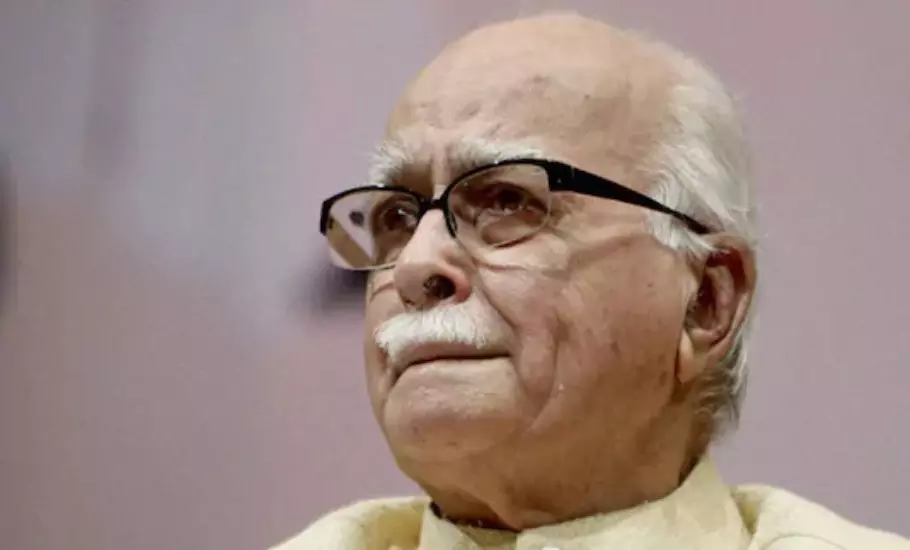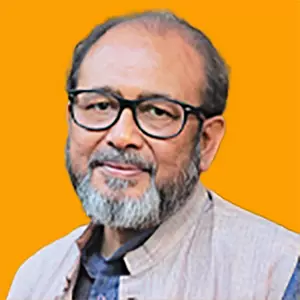
- Home
- India
- World
- Premium
- THE FEDERAL SPECIAL
- Analysis
- States
- Perspective
- Videos
- Sports
- Education
- Entertainment
- Elections
- Features
- Health
- Business
- Series
- In memoriam: Sheikh Mujibur Rahman
- Bishnoi's Men
- NEET TANGLE
- Economy Series
- Earth Day
- Kashmir’s Frozen Turbulence
- India@75
- The legend of Ramjanmabhoomi
- Liberalisation@30
- How to tame a dragon
- Celebrating biodiversity
- Farm Matters
- 50 days of solitude
- Bringing Migrants Home
- Budget 2020
- Jharkhand Votes
- The Federal Investigates
- The Federal Impact
- Vanishing Sand
- Gandhi @ 150
- Andhra Today
- Field report
- Operation Gulmarg
- Pandemic @1 Mn in India
- The Federal Year-End
- The Zero Year
- Science
- Brand studio
- Newsletter
- Elections 2024
- Events
- Home
- IndiaIndia
- World
- Analysis
- StatesStates
- PerspectivePerspective
- VideosVideos
- Sports
- Education
- Entertainment
- ElectionsElections
- Features
- Health
- BusinessBusiness
- Premium
- Loading...
Premium - Events

While Advani paid the price for not retiring gracefully, his receipt of India's biggest award opens the doors for similar honours for Savarkar and Hedgewar
Lal Krishna Advani being conferred with the Bharat Ratna is little but pyrrhic recognition for him. It has come to him at almost the end of a decade when he was slighted by his own.
One wonders if the gratefulness he expressed at being given the country’s highest civilian award was laced with an element of frostiness to match the Indian capital’s unforgiving cold spell.
Formally, over the past decade, he was meted out no greater discourtesy than not being consulted or ignored. But, it was ‘cleared’ grapevine that emanated from the ‘New’ Lutyens Delhi, which was vile: In these circles, it was said that Advani did not recognise his time was up and he overstayed the welcome.
Whenever these words or similar ones wafted into the ears of critics of the Sangh Parivar, there was little sympathy for him. Advani after all, played the pivotal part in shepherding the ideological fraternity to its current state of ideological and political hegemony.
Advani’s comeuppance
Was it not Advani, who after the 1991 Lok Sabha election results were declared, and PV Narasimha Rao formed India’s first minority government, coined most ‘creative’ name tags for his party – ‘the victor who came second’, or the even better, ‘government-in-waiting’?
For largely being the person who mainstreamed the BJP and other organisations with which it was symbiotically connected, and also for his role in paving Narendra Modi’s ascent to power, most critics opined that his marginalisation was poetic justice. His ‘humiliation’ at the hands of a person once considered among his many protégés was Advani’s comeuppance, it was argued.
Paradoxically, as Modi’s politics, policies and strategies hollowed out India’s institutions and its democracy, Advani began being seen as the ‘moderate’ between the two. Yet there is little doubt, neither is a hardliner or the other way around – both are two sides of the same coin.
Decades apart
Separated by over two decades by birth, Modi was still making up his mind between working in a canteen and a lifetime in the Rashtriya Swayamsevak Sangh (RSS) in the early 1970s when Advani was already a member of the Rajya Sabha. He was also multi-tasking within the Sangh Parivar’s numerous outfits, including its official publication, Organiser.
Advani was also in those years – and this is truly an instance of history repeating itself albeit inversely but may be not precisely – actively teaming up with Atal Bihari Vajpayee in challenging the tall leader, Balraj Madhok, within the Jana Sangh. It was Advani, as the party president, who expelled him for differing with party policy.
Advani also had a role in Modi’s induction from the RSS into the BJP in 1986. He started the practice, dating to the Jana Sangh years, of making chosen pracharaks party members. Asked about his role in admitting Modi into the BJP, Advani once told this writer that he did “what a party president would do in that situation.”
Maker of Modi
In politics, history tells us in abundant measure, every pretender or crown aspirant uses the mentor’s shoulders as a stepping stone. After the BJP’s electoral debacle in the 2009 Lok Sabha polls, when the party slid to its tally of 1991 under Advani’s stewardship, it was natural for the gen-next leaders to fancy their chance.
Yet, the veteran continued fancying his chances, often embarrassing even himself. For instance, at the Goa National Executive in May 2019, when he approximated a miffed pre-teenager after being denied a candy.
Advani eventually remained a member of the tribe of politicians who did not know when to walk into the sunset.
Modi's message
It would be naïve to view the Bharat Ratna being bestowed on Advani merely as Modi’s message to political adversaries – that he now has the power to award the highest civilian honour to ‘even’ Advani, the one who ushered in the acceptance of Hindutva politics.
In addition to that, this decision is of course an effort on the Prime Minister’s part to shore up his Hindutva plank further in the run-up the Parliamentary polls due in April-May.
This mark of distinction being accorded to Advani is a negation of what the Sangh Parivar considered a ‘political’ trial that began after the first criminal case was filed in December 1992, for demolishing the Babri Masjid. In that case, Advani was the leading light among the 32 accused who were acquitted in September 2020.
Ram temple movement
The Bharat Ratna to Advani comes after the consecration of the Ram temple. By the time of the temple’s inauguration, voluminous chapters of questionable history had been infused into the ‘official’ accounts of the Ran Janmabhoomi Andolan.
The four-decade-old movement that was flagged off in 1984 is now partisanly claimed to be a 500-year-old ‘struggle of Hindus’ despite evidence to the contrary.
It is no surprise that the temple has been presented as a symbol of national pride. There is no gainsaying that the Ram narrative is considered by a significant section of the majority community, as part of statecraft and the agitation is held as the second national movement which has extricated Indians (read Hindus) from the millennium plus period of ‘bondage and slavery’.
Backing Modi to hilt
The Bharat Ratna to Advani has been given not because in Modi’s judgment, the nonagenarian leader deserved it. The Prime Minister also did not make up his mind because this could not be a better payback to a leader whose support was vital for his continuing as the chief minister after the Gujarat riots.
It is important to recognise that Advani backed Modi despite a numerically significant section in the party, including then Prime Minister Atal Bihari Vajpayee, wanting his head. Importantly, at no point in Modi’s career, neither after the riots, nor after his sidelining, did Advani advise the former to follow Raj Dharma (religion of governance).
When news first surfaced in early January that Advani was not on the invitee list for the ceremony in Ayodhya, it was assumed that Modi was of the view that the veteran’s disgrace was not yet complete.
Along with Murli Manohar Joshi, their age factor being the reason for not being on the invitee list, was circulated by way of explanation before it was let known that they would be going to the temple-town eventually. Finally, neither Advani nor Joshi went. Had they gone, at least the former would have stolen some of the spotlight away.
But more importantly, Advani backed Modi on the important question of performing the consecration ceremony in the face of the four Shankaracharyas staying away and being selectively critical.
“Lord Ram had chosen his devotee (Prime Minister Narendra Modi) to rebuild his temple,” was possibly the most decisive support for Modi, but for which the Prime Minister had no need. The Bharat Ratna to Advani is also no thank-you gesture from Modi for being backed ahead of the consecration.
More from RSS on list?
In the event of his success in leading the BJP to its third successive and more emphatic electoral victory in April-May, Modi has triggered speculations on possible Bharat Ratnas of the future.
It has been rightly observed that a nation is known by the people’s response to the government’s choice for national awards. Opposition parties have criticised Advani’s selection for Bharat Ratna. Unless their opinion is endorsed by people and this sentiment is reflected electorally, the way has been opened for the icons of the Hindu rightwing being honoured similarly in the years to come.
It may eventually just be a matter of time before the same honour is bestowed on the likes of Vinayak Damodar Savarkar, accused but debatably acquitted in the Mahatma Gandhi assassination case, and Keshav Baliram Hedgewar, whose mentor Balakrishna Shivaram Moonje was greatly inspired by the political structures of Benito Mussolini and influenced Hedgewar to introduce some of those. Many others from the same fold may be similarly awarded in years to come.
Ratnas among Bharat Ratnas
If that happens then, the Sangh Parivar’s most iconic leaders will be the ‘real’ Ratnas among the Bharat Ratnas. Advani will also probably get drafted into this list, but only in absentia.
In the stillness of his study, in the evening after formally receiving the Bharat Ratna, when Advani looks at the ‘pipal’ leaf-shaped medallion and the accompanying Sanad or certificate, would he feel gratified or would he rather wish some more courtesy had come his way post-2014?
(The Federal seeks to present views and opinions from all sides of the spectrum. The information, ideas or opinions in the articles are of the author and do not necessarily reflect the views of The Federal.)


